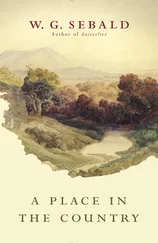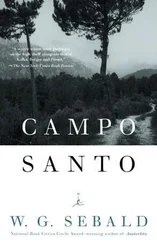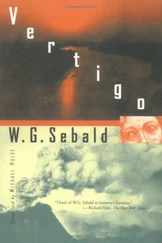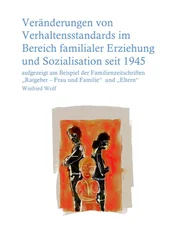young painter which in 1929
passed into the Frankfurt art trade
from Sweden. The small maple panel
shows a scarcely twenty-year-old
at the window of a narrow room.
Behind him, on a shelf not quite
in perspective, pots of paint,
a crayon, a seashell and a precious Venetian
glass filled with a translucent essence.
In one hand the painter holds
a finely carved knife of bone
with which to trim the drawing-pen
before continuing work on a female nude
that lies in front of him next to an inkwell.
Through the window on his left a
landscape with mountain and valley
and the curved line of a path is visible.
This last, Zülch philosophises, is the way
into the world, and no one took it other
than the man, vanished without a trace,
to whom his research is devoted and whose art
he thinks he can recognise in the anonymous picture.
The reason for the signature “M.N.”
above the window-frame must be
that the painter Mathis Nithart,
discovered in archives but otherwise
not identified by any works of his own,
hid behind the name of Grünewald.
Hence the initials M.G. and N. on the Snow
Altar at Aschaffenburg, hence the merging,
most remarkable, given the difference in age,
of the young painter with the Sebastian
pierced with arrows at Isenheim.
And indeed the person of Mathis Nithart
in documents of the time so flows into
the person of Grünewald that one
seems to have been the life,
then the death, too, of the other.
An X-ray photograph of the Sebastian panel
reveals beneath the elegiac
portrait of the saint
that same face again, the half-
profile only turned a tiny bit further
in the definitive overpainting.
Here two painters in one body
whose hurt flesh belonged to both
to the end pursued the study
of their own nature. At first
Nithart fashioned his self-portrait
from a mirror image, and Grünewald
with great love, precision and patience
and an interest in the skin
and hair of his companion extending
to the blue shadow of the beard
then overpainted it.
The martyrdom depicted is
the representation, to be sensed
even in the rims of the wounds,
of a male friendship wavering
between horror and loyalty.
It is conceivable that Nithart
who was also a maker of water displays,
in later years furthered
the mistaking of his person for
the increasingly unsociable Isenheim master,
that perhaps he was the connecting link
between Grünewald and the world become
inaccessible to him in his misfortune.
Around 1527, about twelve
years after the work in Alsace,
Nithart moved from Frankfurt, where
for a time he must have continued to share
the life of Grünewald, to Halle
to build, for its celebrated salt springs,
watercourses and an array
of jet fountains driven
by a most complicated system of scoop
wheels and pipes like that on the Main
at Aschaffenburg, a masterpiece of
mechanical art much visited at the time.
It is said, however, that Nithart
never accomplished much in Halle and often
changed lodgings. In the summer of
’twenty-eight he fell into
deep dejection and then, it seems,
death very soon overtook him.
The Frankfurt magistrates, when the news
of Nithart’s passing had reached them,
ordered a register to be made
of the household effects in his
workshop. The long list embraces
an accumulation of the most diverse things:
spoons and pottage bowls, soup cauldrons,
drawing-belts for water, fifteen
white goatskins, silver talers,
and copper coins from Schwaz in the Tyrol,
books, proclamations, scripts and many
Lutheran printed tracts. All this
irradiated by the glory of a unique
store of paints: lead white and albus,
Paris red, cinnabar, slate green,
mountain green, alchemy green, blue
vitreous pastes and minerals
from the Orient. Clothing, too,
beautiful, item a gold-yellow pair of hose,
tunics, cinnamon-coloured, the lapels overlaid
in purpled velvet with black stitching,
a grey atlas doublet, a red slouch hat
and much exquisite adornment besides.
The estate in truth is that of two men, but
whether Grünewald, an inventor of singular
hues, shared his departed friend’s liking
for such gaudy arrayment
we cannot presume to say.
At the point where the great military road
from Strasbourg to the Burgundian portal, in line with
the run of the Vosges to the south,
crosses the Lauterbach’s course
from the Gebweiler transverse valley,
lies the village of Isenheim.
Here the Canons Regular,
the legendary history of whose order
is traced back to the anchorite
Antonius the Hermit who
in the year 357 departed this life
in the Theban desert, in 1300
acquired the site from the Murbach
Cluniacs to found an Antonian hospital
for the cure of St. Anthony’s fire
which raged throughout all Europe,
an infection of the blood that led
to the rotting away of the limbs
and with leprosy was among
the most dreaded diseases of the Middle Ages.
When gradually St. Anthony’s fire
died, the Antonian hospitals adopted
other ailments that afflicted body or mind
for their healing, such as epilepsy
and the so-called venereal scourges
which spread disastrously after 1490.
The treatment of patients who at their arrival
were usually half-destroyed already
tended towards this, that, as
hieratic witnesses to evil,
at first they were led to the altar
in the choir aisle, baptised in the name
of a martyr to God and so, as it were
despite and together with their perversion,
brought into the precincts of salvation.
In this it happened not infrequently
that from the relic of St. Anthony
encased in the shrine of the altar
a miracle emanated, or that
those in some part horribly disfigured were
later rid of their affliction by the repeated
application of Saint Vinage, an elixir
which the canons obtained annually
on the day of the Resurrection in the monastery
of St. Antoine de Viennois,
near St. Marcellin on the Isère
by pouring wine on the bones,
there preserved, of St. Anthony.
This liquid, twice purified,
was distributed by the monastery’s messengers
up and down the country, and with it
the peasants blessed that pig which
in their sties wore the bell of the saint,
who was also the patron of flocks and their keepers.
As for the hospital itself, where
of the twelve canons eight
usually studied philosophy
under a lector,
the rituals of purification
according to which the sick were treated
became a battle fought over their bodies
against the presence of death manifested
in madness; became indeed the most
fundamental of all confrontations
in which the altar-work commissioned
from Grünewald by Guido Guersi,
the Isenheim Preceptor, was to engage
the painter in a great therapeutic
task through the representation,
executed in beauteous and harrowing
colours, of the hour of the pale
streams of pus. At the latest
with the commencement of his work
in the Alsatian Home of the Crippled
where the most diverse material for inspection
of the manners in which a human being
creeps into himself, herself or
Читать дальше












